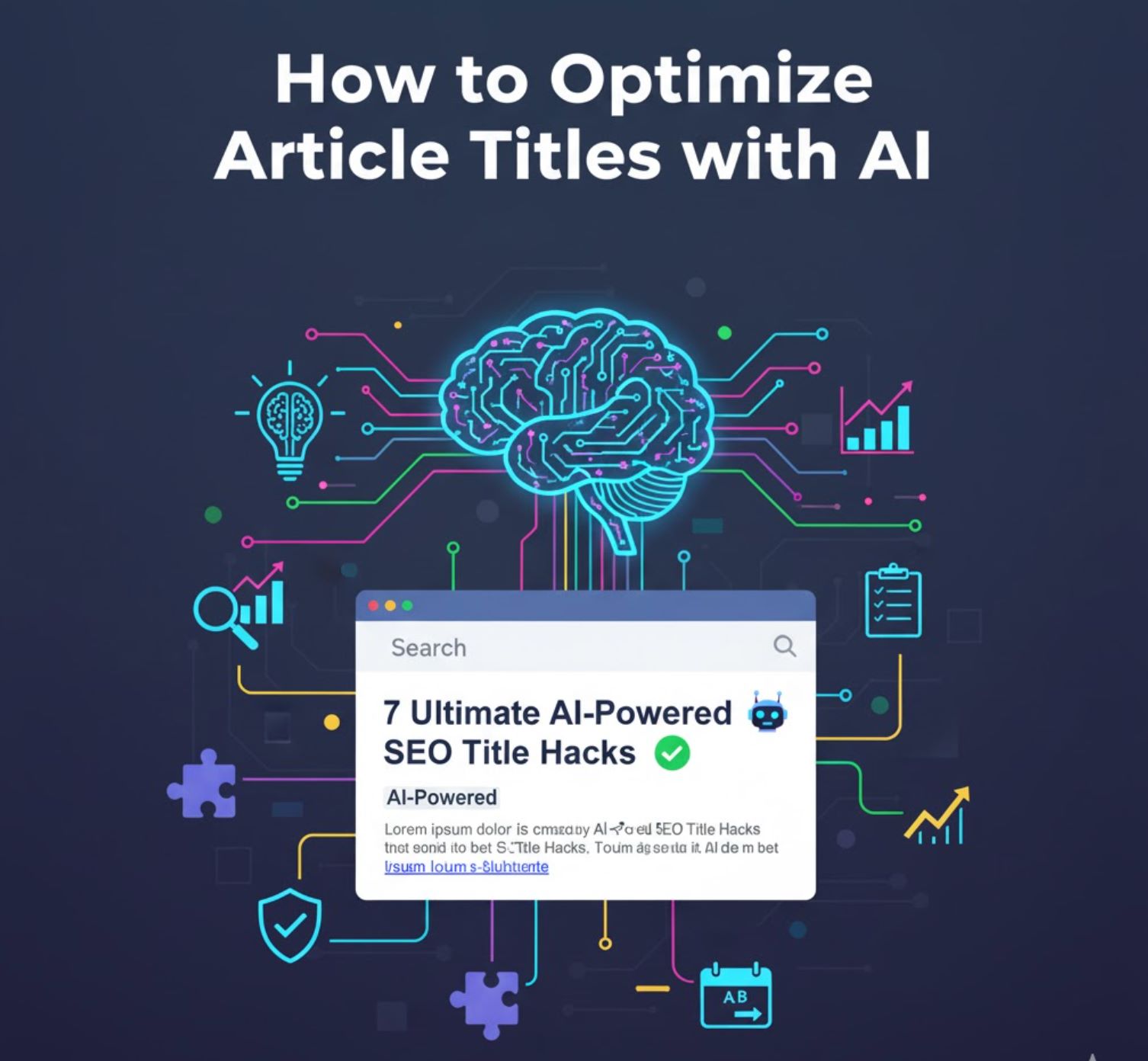How to Write Video Scripts with AI
Writing video scripts has never been easier! From brainstorming ideas and creating outlines to polishing dialogues, AI helps you write faster, smoother, and more creatively. Explore the top tools and expert tips to master AI-powered video scripting today!
AI is revolutionizing the way creators develop video scripts. From brainstorming ideas to polishing the final draft, AI tools can dramatically speed up the process. In fact, over 80% of marketers now integrate AI into their digital marketing, and 43% use AI for content creation tasks (including writing copy and scripts). By harnessing AI, you can boost your creativity and productivity – one study even found AI saved content creators over an hour a day in generating ideas.
This article will explore how to write video scripts using AI, with detailed tips and a roundup of popular AI tools to support effective script writing.
- 1. Why Use AI for Video Script Writing?
- 2. Tips for Writing Video Scripts with AI
- 2.1. Start with a Clear Goal and Audience
- 2.2. Use AI to Outline the Script First
- 2.3. Leverage AI for Catchy Hooks and Ideas
- 2.4. Specify Tone and Style in Your Prompt
- 2.5. Provide Context and Key Points
- 2.6. Iterate and Refine the AI's Draft
- 2.7. Trim and Polish the Script Using AI
- 2.8. Let AI Suggest Engaging CTAs
- 2.9. Repurpose Existing Content with AI
- 2.10. Always Add the Human Touch
- 3. AI Tools for Video Script Writing
- 4. General AI Writing Assistants for Scripts
- 5. AI-Powered Video Script & Content Tools
- 6. AI Screenwriting and Script Analysis Tools
- 7. Choosing the Right AI Tool for Your Needs
- 8. Conclusion: AI as Your Creative Partner
- 9. Related Resources
Why Use AI for Video Script Writing?
AI can act as your creative co-writer, helping you overcome blank-page syndrome and refine your script faster. Here are the key benefits of using AI in scriptwriting:
Speed and Efficiency
AI can draft scripts or outlines in a fraction of the time it takes to write manually. Studies show that generative AI accelerates creative work rather than replacing it, giving writers a "jetpack" to break story ideas faster.
Idea Generation
AI excels at brainstorming. It can generate a dozen hook ideas or dialogue options in seconds, sparking your creativity when you're stuck and helping you overcome writer's block.
Consistency and Personalization
With the right prompts, AI can tailor scripts to specific audiences or brand voices. It can incorporate trending topics, SEO keywords, and adjust tone from casual to professional.
Editing and Refinement
AI tools can suggest cuts, simplify language, and check grammar and flow. Many creators find that AI-generated drafts require human editing (86% of marketers edit AI content), but AI gives you a strong starting point.

Tips for Writing Video Scripts with AI
Writing a great video script with AI involves more than just clicking "generate." You need to guide the AI and then refine its output. Follow these nine essential tips for best results:
Start with a Clear Goal and Audience
Before prompting the AI, define the basics of your video. What type of video is it (YouTube tutorial, product promo, TikTok, etc.)? Who is the target audience, and what is the core message or call-to-action?
The AI isn't a mind reader – a concise brief will yield a better script. For example: "Write a 60-second explainer video script for a fitness app targeting young adults, ending with a sign-up CTA." Being specific about your video's purpose, audience, and desired outcome guides the AI to stay on point.
Use AI to Outline the Script First
Don't expect a perfect final script on the first try. A good approach is to have the AI generate an outline or skeleton for your video. Ask for a structured breakdown: "Draft an outline with a hook, introduction, 3 main points, and a conclusion (CTA) for my video."
The AI can produce a coherent framework including key sections. You can then expand each section, either by writing it yourself or having the AI fill in the details in a focused way. Starting with an AI-generated outline ensures your script has logical flow before diving into specifics.
Leverage AI for Catchy Hooks and Ideas
The first few seconds of a video are critical to grab attention. Use AI to brainstorm a compelling hook: "Give me five attention-grabbing opening lines for a video about [your topic]."
AI will suggest options – perhaps a question, a bold statement, or a surprising fact – that you can choose from or tweak. Similarly, ask for creative angles: "What are some unique ways to introduce a video on baking bread?" By generating multiple ideas, AI helps you find the most engaging concept to lead with.
Specify Tone and Style in Your Prompt
To ensure the AI writes in the right voice, explicitly tell it your desired tone. AI can mimic a friendly, formal, humorous, or energetic tone as instructed. For example: "Write the script in a casual, conversational tone aimed at Gen Z viewers," or "Use an inspiring and motivational tone throughout the script."
You can also paste a paragraph of your own writing and say: "Mimic this style when writing the script." By providing this context, the AI will adjust word choice and phrasing to fit your brand personality, preventing the output from sounding too generic or robotic.
Provide Context and Key Points
The more context you feed the AI, the better the output. If your video needs to cover specific points or facts, include those in your prompt: "The script should mention A, B, and C as the main benefits," or "Include a statistic about renewable energy growth."
By outlining the essential points or data the video must cover, you guide the AI to produce a script that hits all the important information accurately. This reduces the need for heavy revisions later.
Iterate and Refine the AI's Draft
Once the AI generates a draft script, treat it as a rough first version. Read through it and identify weak areas – maybe the hook isn't strong enough, or a section is off-tone. You can then refine by prompting the AI again or editing manually.
Many AI writing tools allow you to tweak the prompt and regenerate specific sections. For example: "Rewrite the conclusion with a more energetic call-to-action," or "Improve the clarity of this sentence." Remember that AI writing is an iterative process. Don't hesitate to experiment with re-prompts to get closer to your vision.
Trim and Polish the Script Using AI
Video scripts often need to be concise. If your AI-generated draft is too long or wordy, use AI to help shorten and tighten it. For instance: "Condense this script into a 30-second video, keeping all key points."
The AI will attempt to remove fluff and repetition while preserving the core message. You can also ask: "Make sure the script flows naturally and is easy to understand for a 13-year-old." AI tools are excellent at simplifying complex sentences or smoothing awkward phrasing. By iteratively shortening and clarifying with AI assistance, you'll end up with a crisp, clear script that respects your video's time limits.
Let AI Suggest Engaging CTAs
Don't forget your call-to-action at the end of the video – and make it compelling. If you struggle with phrasing a natural yet persuasive CTA, try asking the AI for variations: "Give me three versions of a friendly call-to-action encouraging viewers to sign up for our newsletter."
AI can propose creative phrasings rather than standard lines. Instead of a dull "Click the link below," you might get: "Want to see faster results? Tap the link and start your journey today." Generate a few options, then choose or tweak the one that best fits your video's voice. This ensures your script ends with a strong, audience-oriented CTA that doesn't sound robotic or salesy.
Repurpose Existing Content with AI
If you already have a blog post, podcast transcript, or other content on your topic, don't start from scratch – use AI to convert it into a video script. This is a huge time-saver for content repurposing. For instance: "Summarize the following 1000-word article into a 60-second video script, in a lively tone."
The AI will distill the long content into a snappy script, picking out key points. Many creators use this method to turn existing material (like a case study or webinar) into short promo videos or social media clips. AI can also adapt the format – for example, turning a listicle blog into a punchy list-style video script. By leveraging AI in this way, you maintain consistency across platforms and get more mileage out of your content with minimal effort.
Always Add the Human Touch
While AI can draft and refine, the final script needs your human touch. Before you call it done, go through the script and make sure it feels authentic and on-brand. Read it aloud – does it sound like something you would say on camera? If not, tweak the wording or inject a bit of personality.
You might add an anecdote, a joke, or a unique expression that AI wouldn't know to include. Many experts stress that the best scripts feel real and relatable, not like a machine wrote them. So use the AI's draft as the base, but humanize it: add your voice, adjust any awkward lines, and ensure the tone is exactly right.
By following these tips, you can effectively collaborate with AI to write high-quality video scripts. Next, let's look at some of the top AI tools that make scriptwriting easier.

AI Tools for Video Script Writing
A wide range of AI-driven applications can assist in writing video scripts. Some are general writing assistants, while others are specialized for video content or screenwriting. Below, we highlight popular AI tools that video creators are using to script their content:
General AI Writing Assistants for Scripts
ChatGPT (OpenAI)
The most well-known AI writer, ChatGPT is highly versatile for scriptwriting. You can use it to brainstorm video topics, generate outlines, or write full scripts based on your prompts. It excels at producing conversational dialogue and can adapt to many tones or genres with the right instructions.
Best for: Many creators use ChatGPT to draft YouTube video scripts or get ideas for hooks and titles. The base ChatGPT is free, making it a great starting point for AI-assisted scripting. Similar conversational AI chatbots like Google Bard or Microsoft Bing Chat can also perform these tasks if you prefer those platforms.
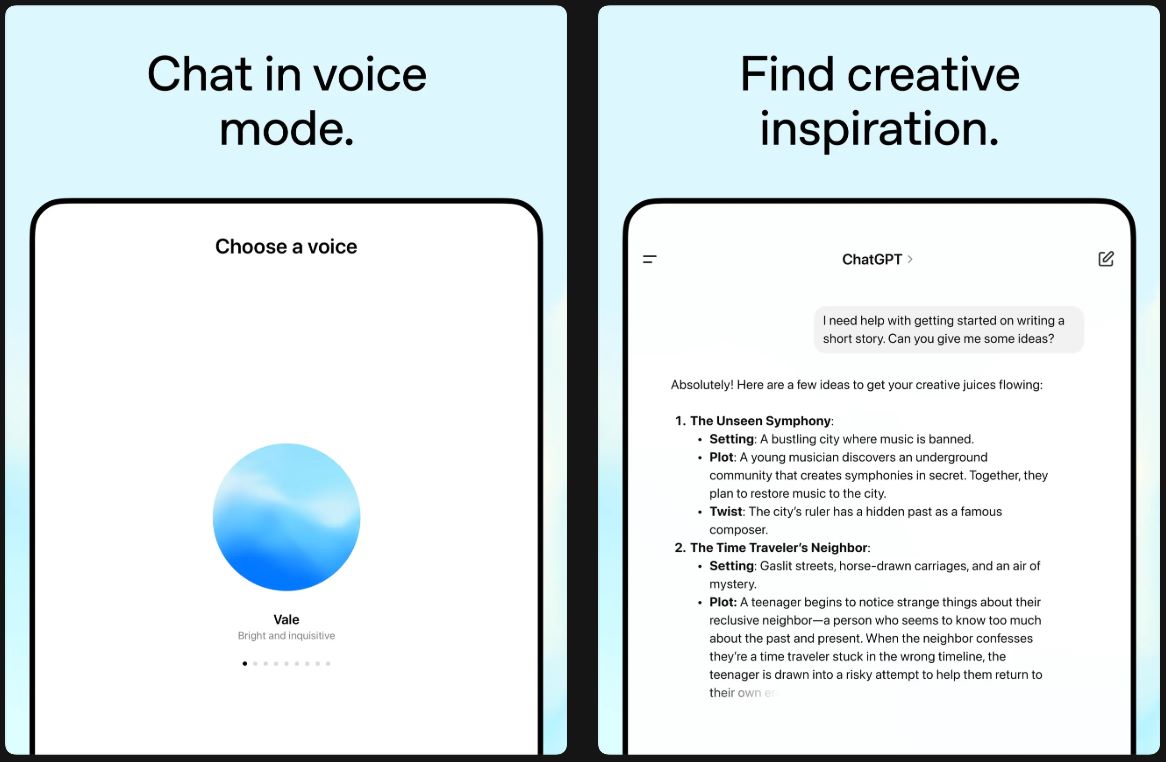
Jasper AI
Jasper is a popular AI writing platform originally geared toward marketing copy, and it offers specific templates for video scripts. Jasper has a YouTube Video Script Writer mode designed to create engaging YouTube scripts, including catchy intros and product demo scripts. Jasper is known for generating persuasive, well-structured content quickly, and it supports multiple languages.
Best for: Content marketers and agencies. For video creators, Jasper can help craft compelling hooks, outlines, and call-to-action phrases tailored for your target audience. It's a paid tool, but favored for its reliability.

Copy.ai
Copy.ai is another AI writing assistant that comes with a variety of templates – including ones for video content. It has a video script template that can generate scripts for social media videos, explainers, or ads. You input some details about the video and Copy.ai will produce a rough script which you can refine.
Best for: Users often praise Copy.ai for its user-friendly interface and the fact that it often provides multiple versions to choose from. There's a free tier to try it out, making it a handy option for quick inspiration or a first draft.
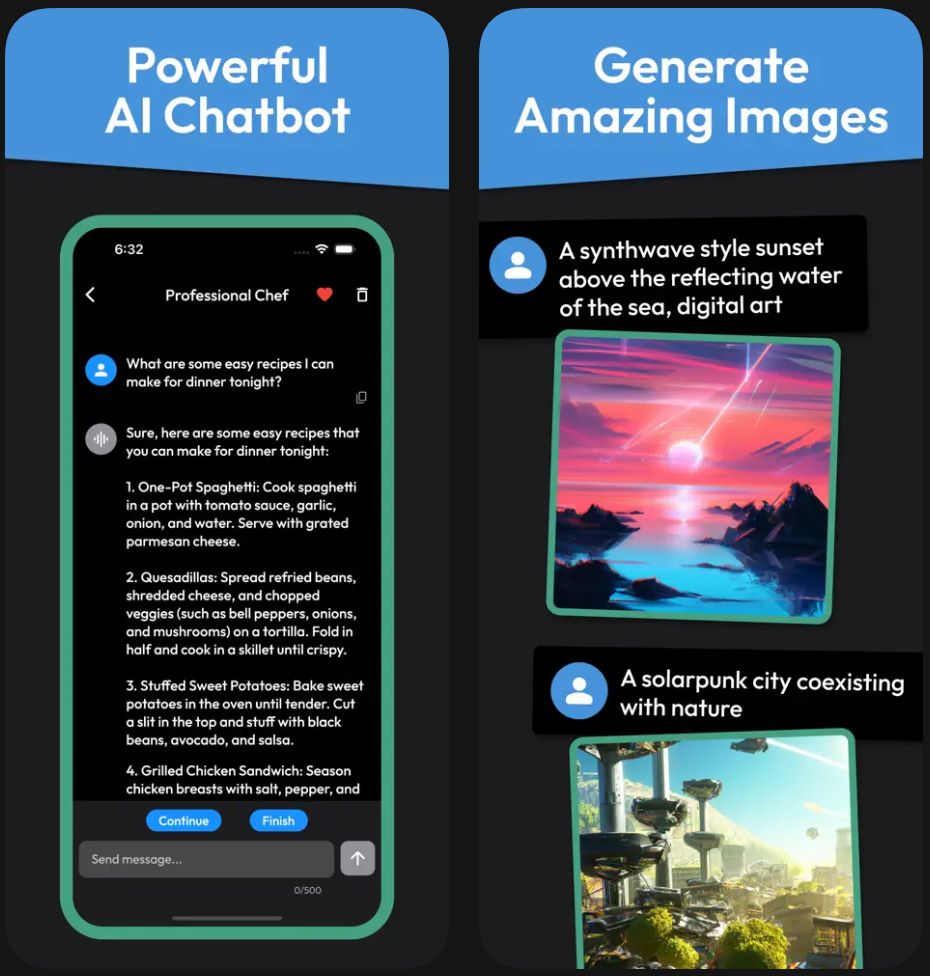
Writesonic
Writesonic is an AI content platform similar to the above, which also includes a dedicated AI Video Script Generator. It's designed to create scripts for YouTube, Instagram reels, TikTok, and more, based on a brief description you provide. Writesonic allows you to specify the tone and length, and it will generate a full script complete with an introduction, key points, and conclusion.
Best for: In a trial by HubSpot, Writesonic successfully produced a coherent video script when given clear inputs, though some tweaking was needed for the final output. It's a powerful tool if you want structured scripts quickly, and it offers other content creation features (like titles, descriptions, etc.) to complement your video script.
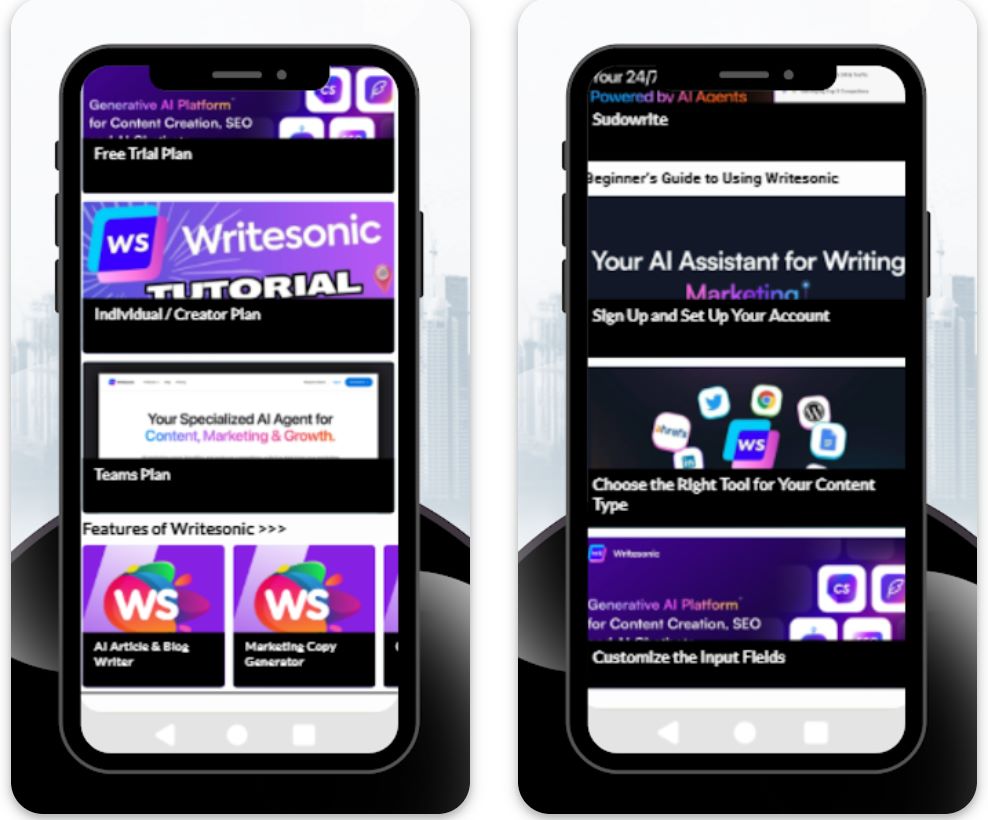
Sudowrite
Sudowrite is an AI writing assistant originally built for fiction authors, but it has features that scriptwriters find very useful. It's particularly good for creative storytelling, dialogue, and overcoming writer's block. Sudowrite's interface lets you brainstorm plot points or ask for descriptive rewrites (their "Describe" feature can add vivid sensory details to a scene).
Best for: For video scripts, especially narrative or storytelling ones, Sudowrite can help flesh out character dialogues or suggest imaginative scenarios. It even rolled out a "screenplay mode" that understands script formatting and elements like INT./EXT. scene headings. While Sudowrite won't format the whole script for you, it's a superb creative partner to generate ideas and rich content that you can then format into your screenplay or video outline. It's a paid service, often praised by novelists and screenwriters alike for its ability to write in your own voice and keep the creative juices flowing.
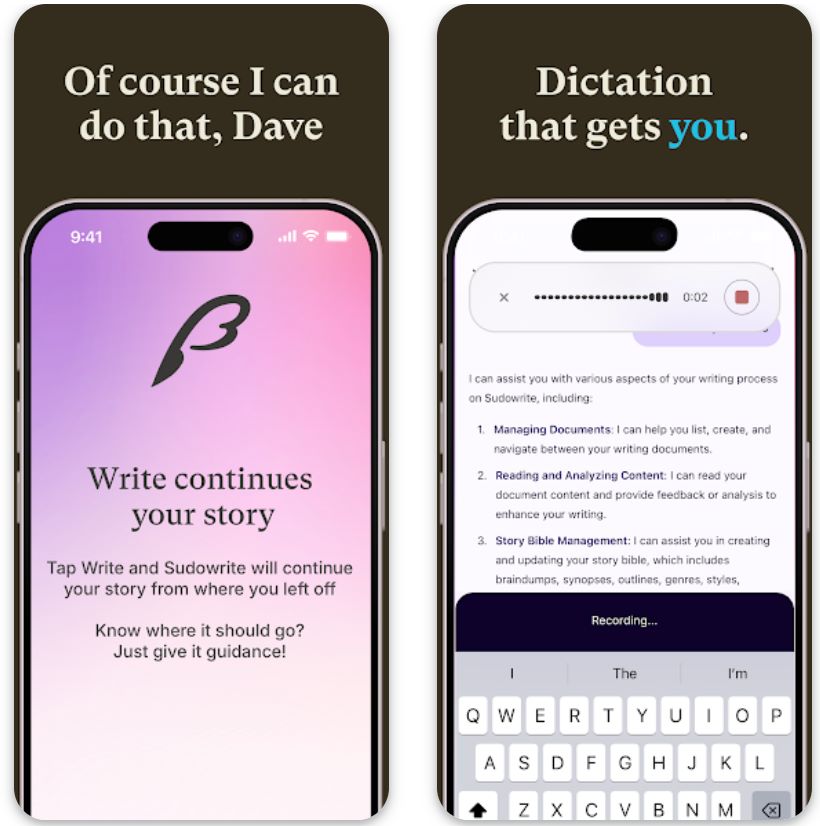
AI-Powered Video Script & Content Tools
Synthesia
Synthesia is best known as an AI video generator with lifelike avatars, but it's also a powerful script tool. You can input a short brief or even a URL, and Synthesia's AI will generate a video script automatically. It's designed for corporate and marketing videos – for example, turning a product page or blog post into a concise script for a video.
Best for: After you have the script, Synthesia lets you choose an AI avatar and voice to speak that script in a video. This makes it a one-stop solution: you get a written script and a produced video from it. It's especially useful for training videos, explainers, or multilingual content (it supports 120+ languages). If you need to churn out lots of scripted videos quickly, Synthesia can be a game-changer.
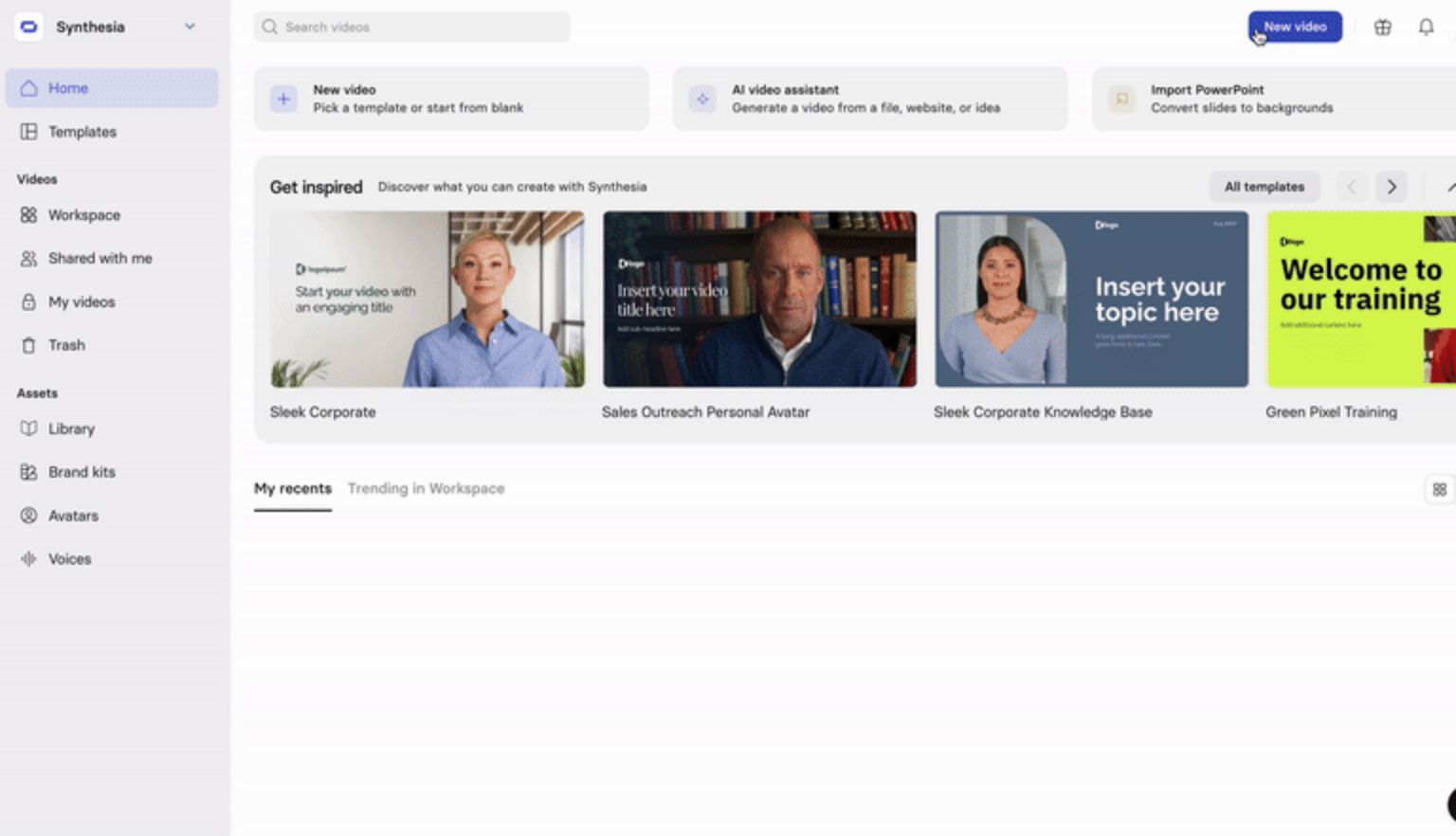
Pictory
Pictory is an AI tool that turns text into videos, and it works great for creators repurposing written content. With Pictory, you can feed in a script (or even a full blog article) and it will automatically generate a video with stock footage, images, and a voiceover.
Best for: Essentially, Pictory converts your script into a finished video, matching scenes to your narration. It's very beginner-friendly: for example, marketers use it to turn blog posts into engaging short videos for YouTube or social media. While Pictory itself is focused on video creation, one of its steps includes offering a summarized script or highlights from your text, which is effectively an AI-edited script. If you have a rough script draft, Pictory can refine the wording to better sync with visuals, then produce the video. You can see how the script plays out in a video format and tweak the text within Pictory's editor for flow.
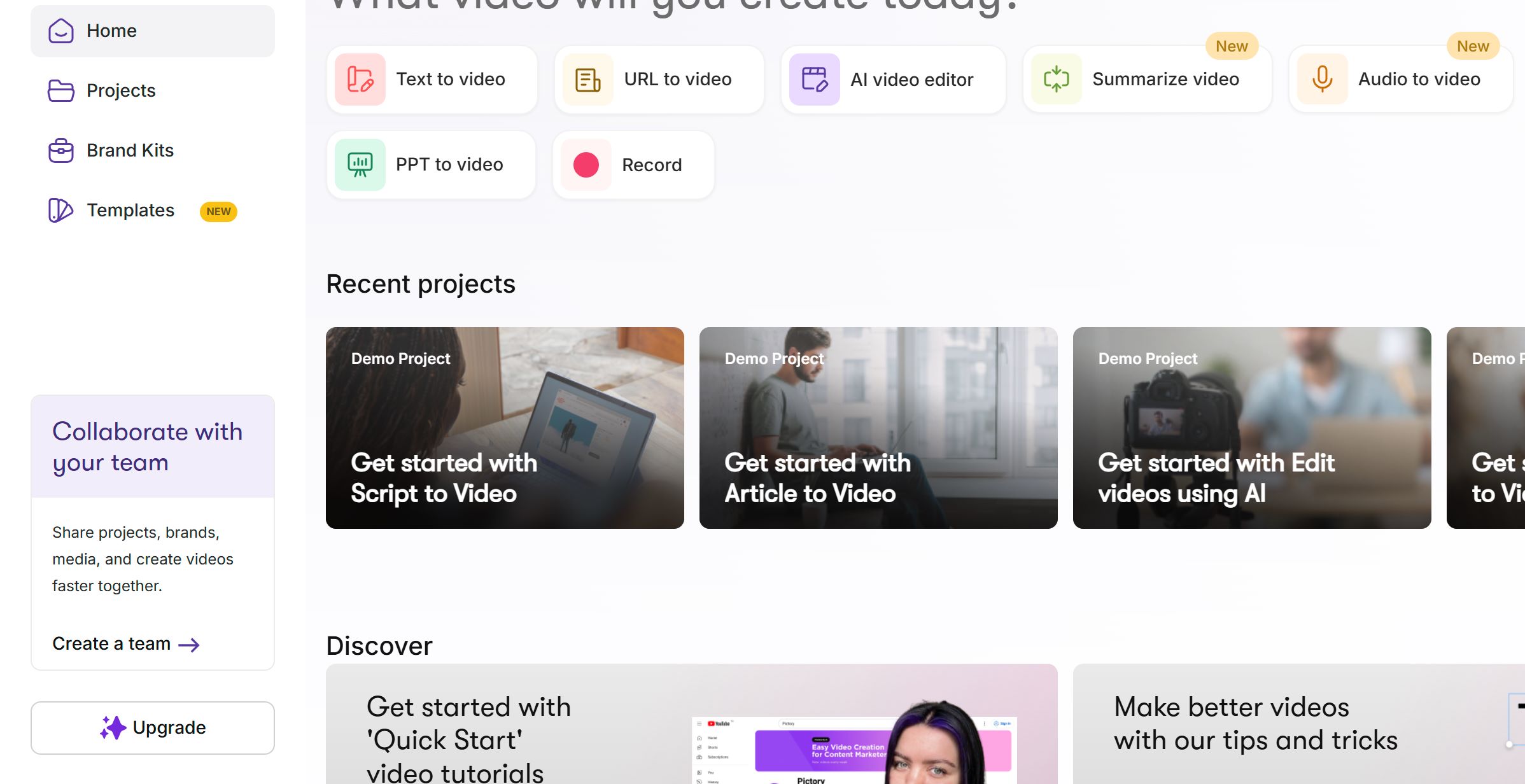
Lumen5
Lumen5 is another popular platform that transforms text into videos. It uses AI to help create storyboard-style videos for marketing, complete with stock imagery and animations. When it comes to script support, Lumen5 can take a blog or article and automatically generate a video script and storyboard from it. It highlights the important sentences (like an automatic summarization) which become your video's "script," and then suggests visuals or footage to go along.
Best for: You can also input your own script text, and Lumen5 will break it into scenes and recommend corresponding visuals. This is a great way to visualize your script and ensure it's optimized for viewer engagement. Lumen5 is especially favored for social media videos and corporate content – it keeps the wording concise and pairs each line of script with compelling visuals, which can guide you in writing scripts that show as well as tell. If you're a one-person content team, Lumen5's AI can accelerate going from a script outline to a polished video in minutes.

InVideo AI
InVideo (a video editing platform) has integrated AI features that include script generation for videos. You can choose a template and ask the AI to write a video script for a given topic or concept. InVideo's AI will produce a script and even create a slideshow-style video out of it automatically.
Best for: This is useful for quick social videos or if you need some inspiration on how to structure your content. The tool allows further manual editing, so you can refine the AI-generated script and design before finalizing the video. InVideo AI is geared towards marketing content, offering stylistic templates (e.g., for a listicle, how-to, promo, etc.) and then filling in text via AI. It's a handy aid if you want both script and visuals done in one go.

AI Screenwriting and Script Analysis Tools
WriterDuet (with AI features)
WriterDuet is a professional screenwriting software, and it has begun adding AI-assisted tools to help scriptwriters. One feature, ScreenplayProof, acts as an AI proofreader for scripts, catching formatting or grammar issues specific to screenwriting. Another, ScreenplayIQ, provides analysis like identifying plot points or suggesting improvements (somewhat like a script consultant).
Best for: While WriterDuet firmly positions AI as a helper (not a writer) – "AI cannot write a better screenplay than you, but it can help you write a better screenplay," – these features are valuable for polishing your scripts. AI-driven suggestions in WriterDuet can help overcome writer's block and enhance your script's quality, all within industry-standard formatting. For example, the AI might suggest alternative dialogue if it notices a cliché, or highlight inconsistent character tone. If you're writing narrative films or web series, WriterDuet's AI tools keep your script sharp while you maintain creative control.
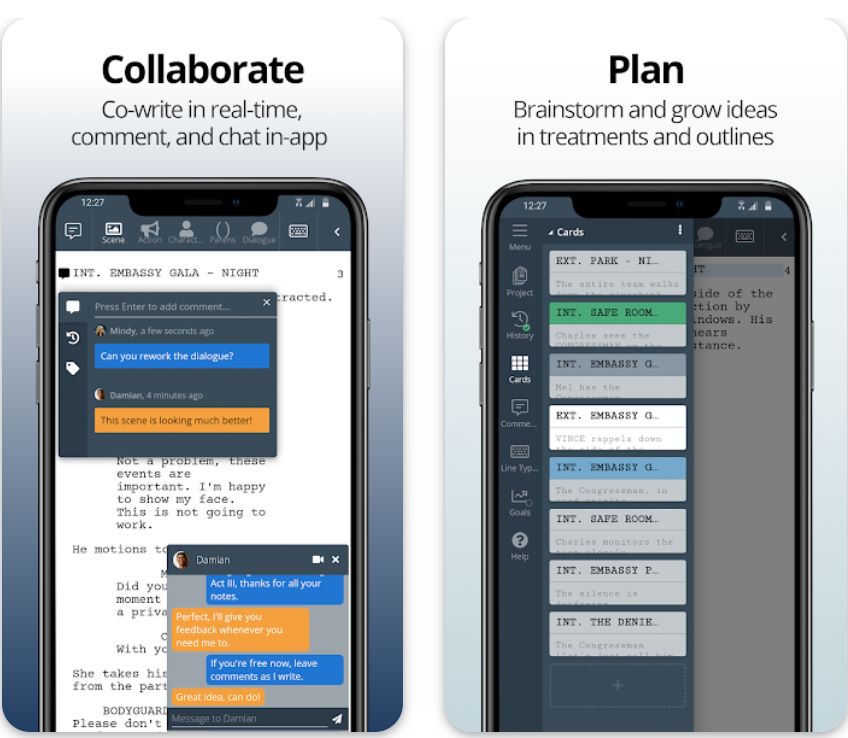
ScriptBook
ScriptBook is an AI platform that doesn't write scripts, but analyzes screenplays to predict performance and provide feedback. It's used in the film industry to evaluate scripts for things like commercial viability, emotional arcs, and character development. As a scriptwriter, you could use ScriptBook's analysis to identify weaknesses in your story or get an objective "second opinion."
Best for: For instance, it might predict audience engagement levels for different scenes, or flag if your script's genre elements are off-balance. While this is more for long-form screenplays than short marketing videos, it's worth noting how AI can support the script review process. Tools like ScriptBook essentially serve as AI script consultants – they won't create content, but they can save you from going down a wrong path by giving data-driven insights. Studios have used such tools to inform greenlighting decisions, but individual writers can also use them to refine drafts before pitching.
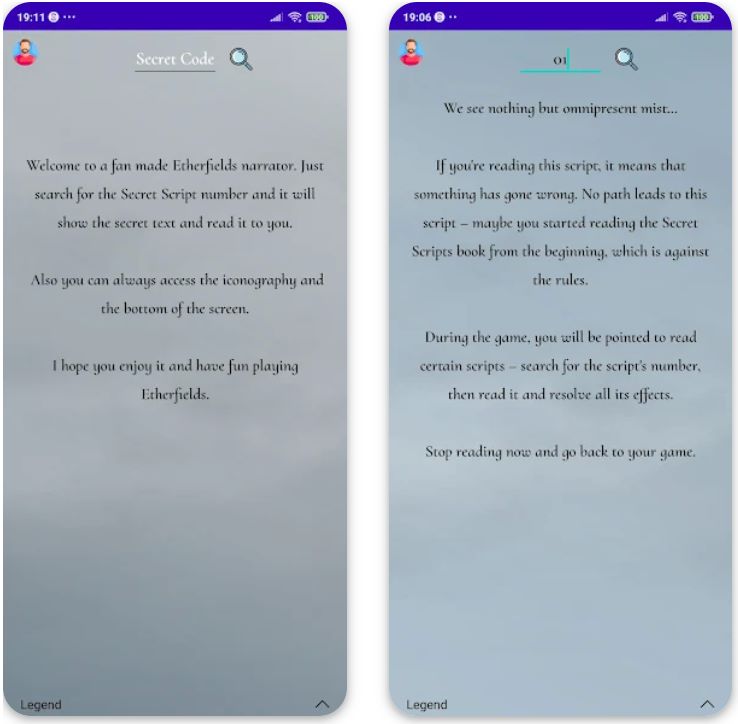
Saga & NolanAI
Saga is an application that helps you brainstorm and outline screenplays; it can turn basic ideas into storyboards and even suggest camera shots for your script. It's like having an AI assistant throughout the storytelling process – from initial idea to final script polish.
NolanAI offers a full suite covering concept development, collaborative writing, and even scheduling, with AI features embedded at each step. One emphasis of NolanAI is ethical and secure AI usage – it encrypts your scripts and respects your privacy while giving AI-driven feedback and suggestions.
Best for: For independent filmmakers or YouTubers creating narrative content, Saga and NolanAI can accelerate script development and planning. They won't replace your storytelling, but they provide a supportive framework (plot suggestions, automated formatting, etc.) to turn your ideas into a polished script and beyond.

AI Screenwriter & Melies
AI Screenwriter (built by film industry veterans) acts like a smart co-writer that gives pro-level suggestions as you develop your screenplay. It can brainstorm plot ideas, help structure your story, and ensure your script follows best practices, drawing on a database of successful films.
Melies (named after the filmmaker Georges Méliès) is another innovative tool aiming to empower indie creators – it not only helps write and expand your script (offering outlines, scenes, even dialogue ideas), but also includes AI image and video generation for a one-stop filmmaking solution. Melies can take a high-level concept and propose story treatments across genres, inspiring you to push your creativity.
Best for: These tools are still emerging, but they represent how AI is entering the domain of creative screenwriting. They won't magically produce an award-winning script at the push of a button (no AI can do that), but they are powerful aides to iterate scripts faster, explore multiple versions of a scene, and handle tedious parts of formatting or research.

Choosing the Right AI Tool for Your Needs
Each of the above tools has its strengths. Some excel at short-form video scripts for marketing, others at long-form storytelling. When choosing an AI tool, consider your specific needs:
Pro tip: Test-drive a bunch of AI scriptwriters to find the one that fits your workflow. Most importantly, remember that these tools are there to assist you. The final vision and voice of the script should come from you.
Conclusion: AI as Your Creative Partner
AI is transforming video script writing from a tedious task into a more streamlined, creative process. By using the tips above – from crafting precise AI prompts to refining the AI's output – you can write video scripts faster and smarter with AI without losing your personal touch.
"AI isn't here to take over your creativity; it's here to supercharge it."
— Social Media Expert
The key is to maintain a balance: let AI handle the heavy lifting of brainstorming and drafting, but always review and customize the script to make it uniquely yours.
With the right approach, AI becomes your writing sidekick, handling the grunt work so you can focus on the big creative ideas. In the end, the magic of a great video script still comes from your human creativity and insight. AI can expedite the journey from concept to script to screen, but your voice and vision are irreplaceable.
Embrace AI as a powerful assistant, and you'll find yourself writing more effectively than ever – saving time, iterating more ideas, and producing scripts that truly connect with your audience. Happy scriptwriting, and enjoy the collaboration with your new AI co-writer!




